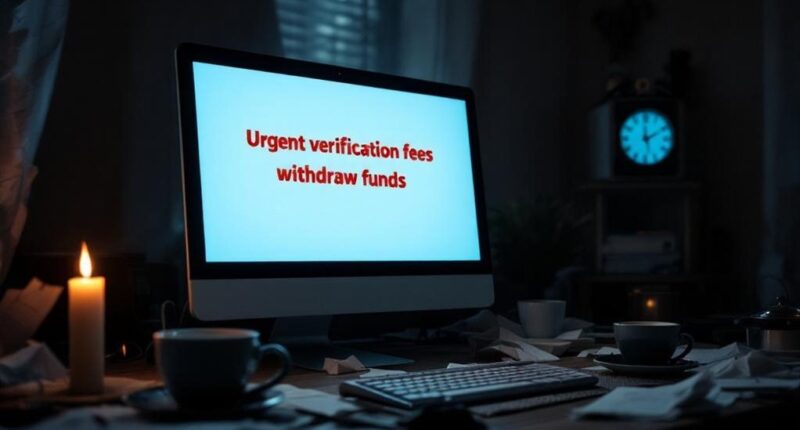Why do crypto scammers always seem one step ahead of even the savviest investors?
The answer lies in their evolving tactics and psychological manipulation that exploit both greed and trust.
With over $3.1 billion lost to crypto scams in just six months of 2025, these digital predators have refined their approach to an art form.
The most common trap appears when you’re trying to withdraw your funds.
The withdrawal request—the moment when crypto scammers reveal their true intentions and your investment suddenly becomes hostage.
Suddenly, your “profitable investment” hits a roadblock: unexpected “verification fees” or “gas fees” required before you can access your money.
It’s like reaching the checkout with a cart full of groceries, only to be told you need to buy a special membership card to exit the store.
Legitimate platforms never demand additional payments to release your own funds.
These invented fees—whether labeled as “profit taxes,” “margins,” or other vague terms—are hallmarks of fraudulent operations.
The scammer’s playbook typically includes arbitrary deadlines and questioning why you “urgently” need your money, creating pressure that clouds judgment.
The infrastructure behind these scams is deliberately elusive.
Platforms lack regulatory oversight and often maintain anonymous operator details.
When withdrawal requests surge, these operations have been known to disappear entirely—over 150,000 crypto scam complaints were filed in the U.S. alone in 2024.
Staying vigilant against scams requires understanding both the technical and psychological aspects of these fraudulent schemes.
Communication patterns reveal further warning signs.
Support agents who frequently switch messaging platforms, provide generic responses riddled with grammatical errors, or refuse to explain regulatory procedures are likely part of fraudulent operations.
When pressed, they may threaten to freeze your assets unless additional payments are made.
Perhaps most effective is their psychological manipulation.
Using emotional triggers, impersonating trusted figures (sometimes with deepfake technology), and promising “guaranteed” returns, scammers build false confidence.
When withdrawals are requested, they deploy various tactics to extract more money.
Many victims report being asked to pay supposed IRS tax payments before accessing their funds, a common ploy seen in numerous cases reported to regulatory authorities.
The statistics are sobering: investment scams caused $5.8 billion in losses in the U.S. in 2024, with seniors disproportionately affected.
While blockchain technology itself is remarkably secure—only 0.14% of on-chain volume is traced to illegal activity—individual investors remain vulnerable to these sophisticated social engineering tactics.
Scams and fraud represent approximately 24% of illicit cryptocurrency activity, showing how prevalent these withdrawal schemes have become in the broader landscape of crypto crime.









